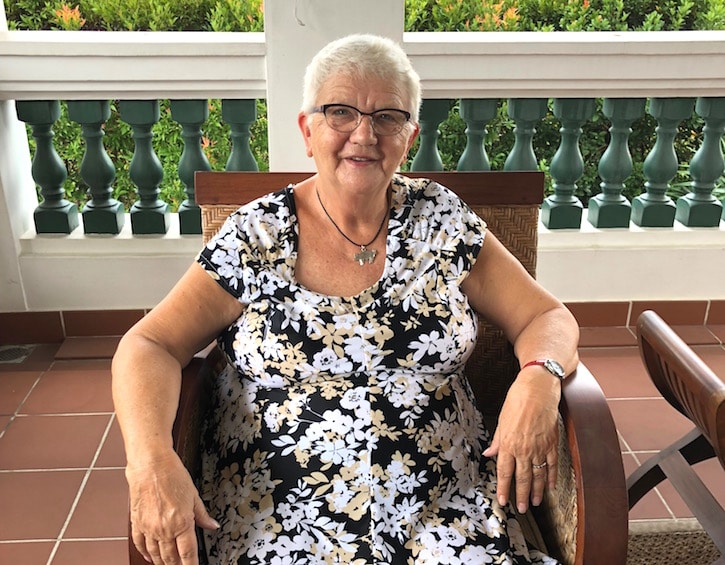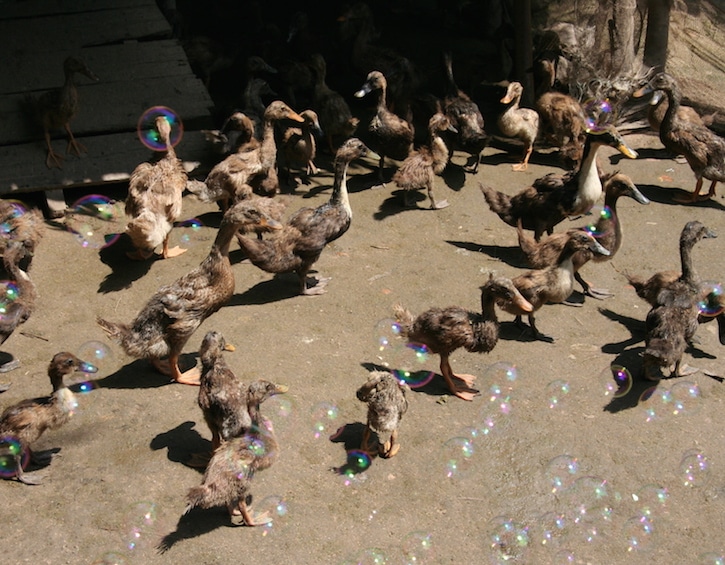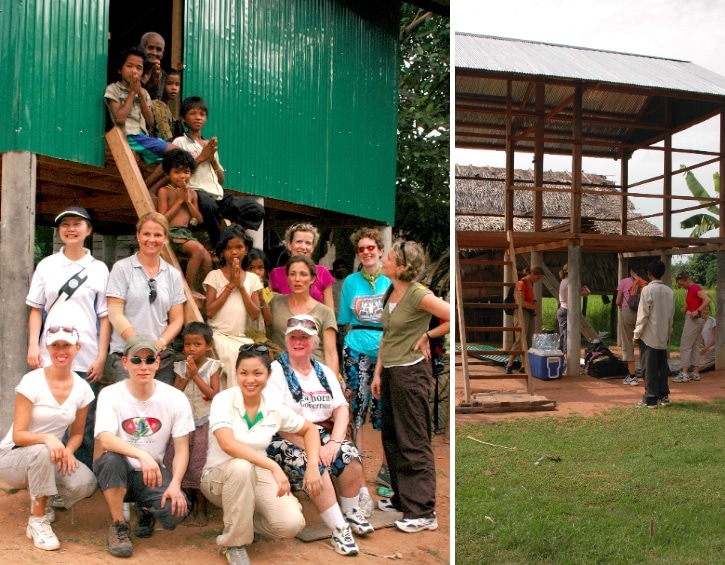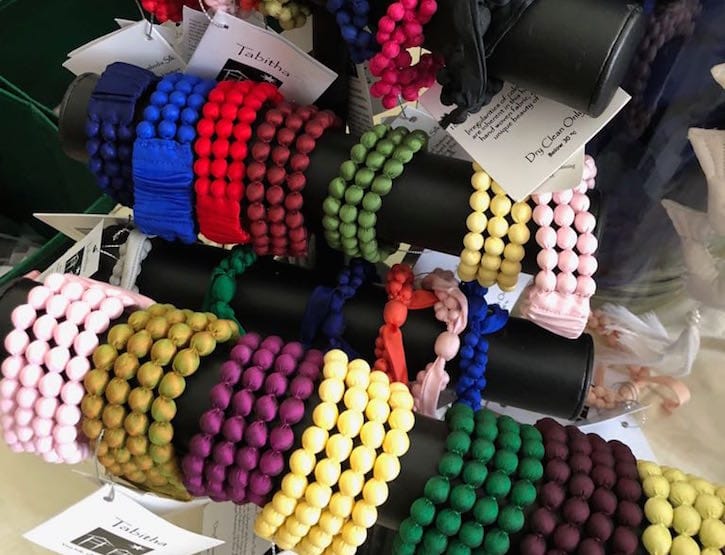
No, her name isn’t Tabitha! Janne Ritskes has helped improve the lives of MILLIONS of Cambodians; here’s how she’s done it, and how you and your kids can help, too
Any mama who’s lived in Singapore for a hot second is probably well acquainted with the Tabitha Foundation, a charity established in 1994 to promote self-sufficiency and dignity in Cambodia’s poorest communities. This is achieved through savings, counselling and goal-setting programs. Here in Singapore, many students participate in fundraisers and service projects to support Tabitha, and the foundation is also quite famous for its semi-regular cottage industry sales featuring Tabitha silk and other beautiful handmade products from Cambodia and elsewhere.
To date Tabitha has empowered over 1.8 million Cambodians to provide food for their children, clean water to drink, shelter and a source of income. It’s all been driven by Tabitha Foundation founder Janne Ritskes, who’s dedicated her life to volunteer and charity causes, primarily in Asia and Africa.
We recently caught up with Janne during a visit to Singapore to hear more about how she built the charity from the ground up, along with Tabitha’s current fundraising drive to construct Nokor Tep Women’s Hospital in Phnom Penh. Read on to find out more about how you can get involved, and to feel truly inspired, mama…
This interview has been edited and condensed.

Can you tell us a bit about yourself? What brought you to Asia, and how did you get involved in Cambodia in the 1990s?
I was born in the Netherlands and immigrated to Canada, where I spent my youth. I worked there and lived on the US/Canadian border, and it was my age group that experienced Vietnam. Cambodia was an integral part of the Vietnam War, and then the aftermath of the war was the destruction of Cambodia, Pol Pot, genocide… So it was a place I felt great guilt about. The destruction of Cambodia was just total.
[In the meantime], I went to college in the States, I worked on Skid Row, then I worked in the Philippines for eight years, working with squatters. Then I went to Kenya in East Africa, doing similar work [to what I’d eventually do with Tabitha in Cambodia].
I was too scared to do anything in Cambodia following the war, but when it opened up again, I took the opportunity and went, initially in 1992. It was a very difficult place; 90% of the people were living in mud thatch huts. Phnom Penh had over a million displaced persons living along the riverfront. The roads weren’t paved, there was no electricity to speak of, there was one bank, and it cost US$300 to write a check.

What gave you the idea to establish Tabitha? How did you start out?
I first came to Cambodia with another NGO, and grew very disillusioned. Rather than criticize, I went home, took out my savings and pension, slept on the floor of the office, and here we are today!
In terms of disillusionment, there was a sense of lack of respect for people. There seemed to be tremendous anger with people for not improving their lives instantly. There was criticism of the poor. So many programs are based on pity, rather than respect. Or assumptions about people being lazy, or stupid. These are people who have lost everything, and now you’re going to take that sense of self away as well?
There is dignity in everyone, my whole goal in life is to bring out that dignity.
Tabitha is geared toward designing programs that allow people to make their own choices and decisions. I don’t have the power, YOU DO.

Where does the name Tabitha come from?
Tabitha is biblical. Her original name was Dorcas – a woman in Acts who worked with poor people doing similar work. When I registered the charity in Cambodia, I was going to call it Dorcas, but somebody else actually had the name already.
It really works, though, because in Khmer “Ta-beeth-a” means “to speak”.
When I worked in the Philippines, which is where I grew up and learned how to do the work, we had a nutrition program and it was my job to feed the children. Every day we’d go out to the market, buy all the healthy stuff, then come back and cook. The moms would show up at lunchtime. One of the parts of the program was weighing the children; I would get really upset because number one, the mothers weren’t doing anything expecting me to feed them. Number two, the children were losing weight. How can they lose weight when they’re getting a decent meal?!
I began to understand very quickly, I took away the mothers’ responsibility, and their dignity. It was my job to feed them, so the mothers took the attitude that they had their meal for the day, there was no need to feed them later. So I closed the program, and that caused a real kerfuffle.
By the time I got to Cambodia, I knew what not to do. The underlying principles: Everybody is worthy. Bringing out the best, in a population that’s terrified, where people have lost their families with no rationale for why it happened.
How do you institute a program that will allow them to start dreaming again? Start believing in themselves, start working for themselves? TO start saving and making those conscious choices.

How does Tabitha empower families, and women and children in particular?
The savings program is the crux of everything. That’s a 10-week cycle, where families decide how much money they want to save. Before they start saving, they share with us what it is that’s driving their family crazy.
With the very poor, it’s something quite simple. They might say, “If I had a towel to dry myself off with. Or a chicken.” These are often things that are readily available very cheap.
With the savings program 75 cents a week is our limit now; it used to be 25 cents. After 10 weeks, you have $7.50 and three days to buy whatever that thing was that you needed.

When families start with things that are income-generating, such as chickens or ducks or whatever, it’s a very powerful thing because within a cycle or two they can sell 100 chickens or ducks, and that’s worth over $700.
Now you’ve got the real stuff happening: pay off your debts, the clan system requires helping out relatives. The difference between poverty and “middle class” is steady income.
Once you’ve got a bit of land to grow rice or something, then you’ve got chickens, add pigs…that’s good money. It takes a couple of years, but within a couple of years, their income is really quite good.
It’s just a snowball effect: in a family that maybe doesn’t have 15 kids, they can get to the middle class life in five years. If we’ve done it right and encourage the family in the right way, they’ll have 4-5 sources of income. So if one dries up, it’s ok.
We often work in areas with a school from the pre-Pol Pot days that’s collapsing, or where there’s no school at all, and we help the village.
We also do volunteer house-building – a starter home that teams build. It’s a great experience for people who donate to us. They get to come and see, and to physically do something. Three days – that’s all I want to see you, and then you go. It’s not a tourist thing, it’s the real thing.

How many people are involved with Tabitha on the ground in Cambodia?
We have about 56-57 on the team, working on average with 12,000 families a year across 13 provinces.
Around 1000-1,500 volunteers visit each year. Singapore and Australia are big – all the international schools in Singapore, and then corporate teams, family teams, women’s teams. Hong Kong, Taiwan international schools come, too. I think we’ve also had three or four international schools from Europe, and a couple teams from the U.S. and Canada come every year, too.
How did the Tabitha sales become such a staple in Singapore?
Teachers from UWC came and saw what we were doing, and that’s how the housebuilding began. UWC teachers who carried the first bags of stuff that we made here from Cambodia back to Singapore. The first bag came over in 1994, three months into the program.
Cottage Industry is all about women who were sold into the sex trade, and it’s their way out.

What are some ways mamas in Singapore can get involved with Tabitha?
Nokor Tep Women’s Hospital in Phnom Penh. The building itself will be completed this year. We have half a million women within 20 minutes of our location.
You can support financially through donations, or you can come as a volunteer. We don’t have a financial backer. With limited funds, it’s the Cambodians who get paid. But within that context if you have some kind of skill that would be valuable to us and you’re willing to share that skill – it’s one of the few opportunities in the world where you could replicate yourself.
So if you’re a doctor or nurse – by the way it’s women’s medical issues, gynecological issues and women’s cancers, that adds another piece.
If you’re good at administration, or house cleaning. If you want to come and teach people how to clean? Super!
If you’ve got a specialized skill, you can come for a week. Everyone who comes is a teacher. You are going to teach and enable others to learn what you know, and then implement what you know. Everyone who comes adds to the teaching.
Any final thoughts?
My whole goal is that I can sleep at night. I do counsel others. My big thing is, “You know whether you’ve done good or not. If you’ve done good, you will sleep.”
They don’t need pity, it’s about self-improvement. That’s not an overnight thing.
Thank you SO much for sitting down and sharing your thoughts, Janne!
If you’d like to get involved, mamas, join the Tabitha mailing list to be kept up to date with upcoming sales and other private events. You may also like their Facebook page to get select updates. Next up on the horizon: a sale at the Cinnamon Room (Chip Bee Gardens) on 13-14 September!






 View All
View All





 View All
View All











 View All
View All







